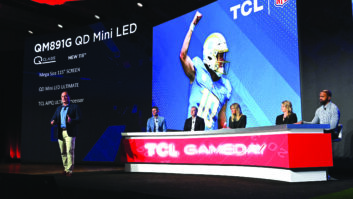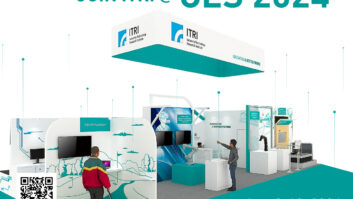Opportunities to expand the market for high-performance home audio are growing as new sources of music content — including iPods, PCs and Internet radio — gain popularity and as sources of multichannel surround — including video games and HDTV programs — proliferate, industry executives said during a Consumer Electronics Association (CEA)-moderated panel discussion at International CES.
Panelists also agreed that the home audio industry can capitalize on the growth potential only if retailers play the new sources through high-quality audio systems during in-store demos, which have grown increasingly infrequent for multiple reasons. The audio demo, however, could make a comeback, some panelists believe, as retailers focus on boosting thin flat-panel margins and as big-box retailers begin offering a higher level of service to fend off competition from mass merchants.
Proliferating sources and playback platforms, including PCs at home and at work, create “a greater opportunity to entertain and get consumers excited about audio,” said Steve Caldero, sales VP of Southern California’s Ken Crane’s Home Entertainment chain. Demand for high-performance audio won’t grow, however, without an extra nudge from retailers and the support of suppliers, he and other panelists said. “We have to create demand by giving them the experience,” Caldero said. With that in mind, all Ken Crane’s salespeople use iPods to play back iPod-stored music and video through high-quality sound and video systems. “We use the iPod as a gateway” to high-quality home audio system sales, he said.
Connecting high-quality audio products to other sources, including HDTVs and surround-sound video games, is also critical to generating audio sales, but panelists agreed that such demos aren’t as prevalent as they should be. One reason is that retailers have been focusing on soaring demand for HDTV. Another is that many A/V specialty stores have closed their storefronts to concentrate on custom installation. Some panelists were nonetheless optimistic about the future of the audio demo. “If we sell only screens, we’ll go out of business, and we have no intention of being gone,” said Ken Crane’s Caldero.
Custom installers can also demonstrate the experience by letting consumers plug their iPods into demo systems in builders’ model homes, said installer Ric Johnson, president of installation company R.L. Johnson Construction Services of Lima, Ohio.
Giving consumers more venues to experience a proper product demo is a key driver in the expansion of factory stores by such companies as Sony, Apple and others, said Steve Koenig, CEA’s senior industry analyst. Yet, he said he is optimistic that “there will be more of a return to demos” by retailers now that mass merchants and warehouse clubs are stepping up their electronics assortments. “As sales from these retailers eat into sales of the big-box guys, the big-box guys must provide a higher level of service to maintain sales,” he explained.
Suppliers, however, also have a role to play, Caldero noted. He cited the networking capabilities of select HDTVs as an example. The feature needs to be demonstrated, but “nobody knows it exists” because suppliers haven’t given retailers the tools to demo it, he said.
Although many have lamented the poor audio quality of the iPod, said Thiel president Kathy Gornick, “The more people who listen to music, the better. They will want a better experience.” NetStreams marketing VP Petro Shimonishi agreed. The iPod “is a great growth driver four our entire industry.”
The high penetration of HDTV sets also helps the audio industry, said CEA’s Koenig. With so much HD content available, “people are realizing they’re missing out on the audio.”













